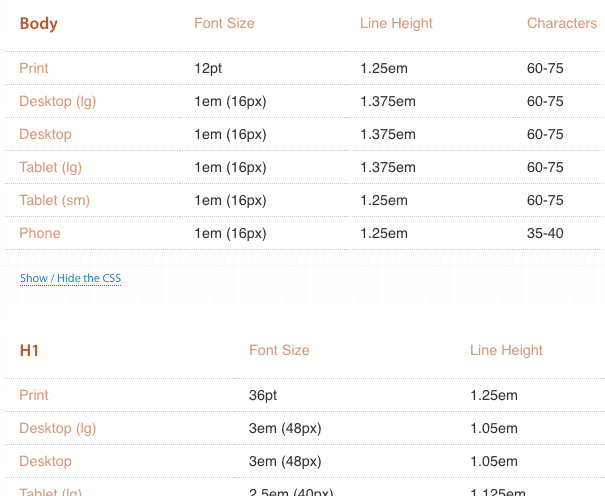Subscribe now and get the latest podcast releases delivered straight to your inbox.
5 Tips for Increasing How Much Time Visitors Spend on Your Website

Jun 25, 2019

In a perfect world, all of our target customers would search for content in their favorite search engine, our content would come up as most relevant, and once they arrive on our site, they’d consume it all, ending with a conversion.
Many times, however, one or all of these factors is lacking or poorly aligned, resulting in an unsatisfactory bounce rate — defined as the percentage of visitors to a particular website who navigate away from the site after viewing only one page.
In other words, these factors directly affect the time visitors spend surfing your page(s).
There are no simple tricks to keeping people engaged with your site, but there are several things that can influence this that you should know.
In this article, we’ll approach this holistically with five essential tips.
1. Relevant Content
When people click on a search result, they embark with the expectation that their question will be answered when they arrive. When planning or writing your content, it’s important to always put yourself in your customer’s shoes.
Will the content you’re creating truly be the answer they’re looking for? Is this content really geared for the targeted search?
You may be thinking: “That’s Google’s job, not mine!” Well, Google can only work with what you put into your headline, excerpt content, meta content, and text.
If these aren’t all in order, then you may be putting yourself at the front of the wrong search line — meaning you may come up as a result for a particular search that your content doesn’t fit.
Approach each and every page, article, or blog post with your core visitor in mind.
Ensure that you address their question early on so they know that they’ll get their answer if they keep reading. Then, of course, deliver it. You don’t want to bait and switch.
2. Legibility and Ease Of Use
 You may have the world’s greatest content writer working diligently and intentionally to delight your visitors, but if the content is difficult to read because the font or your design isn’t optimized to ensure ease-of-use and legibility, you may obscure the site’s main purpose: to inform.
You may have the world’s greatest content writer working diligently and intentionally to delight your visitors, but if the content is difficult to read because the font or your design isn’t optimized to ensure ease-of-use and legibility, you may obscure the site’s main purpose: to inform.
In turn, your visitors will eventually become frustrated and go back to the search page.
First, ensure that your site is easily viewed on any device, whether desktop or mobile. This not only ensures that your user experience is solid, but may even provide a boost in your overall search rankings.
Studies show that, at a minimum, a comfortable reading experience can be attained with a 16px font size and a 1.45 em line height.
The em measurement is a way to relatively position the lines based on the font size itself — essentially, it’s a measurement of space based on the font size.
Sites like Typescale provide tools to help you determine all your font sizes.
It’s also a best practice to ensure there’s enough contrast between your background and your font color, too.
In other words, if you have a dark background, you’d use bright text that doesn’t clash or get lost in the background.
The inverse is the same: for light or white backgrounds use a dark, comfortable-to-read font color.
Finally, try and keep your line lengths as short as possible.
This is partly the reason newspapers are broken up into columns. It’s much easier to keep your place as you read when you’re not scanning long lines of text. It also offers the eyes a visual break.
When it comes to the consumption of information, form should always follow function. In other words, your design/presentation needs to aid the delivery of the information.
Keep your site’s design free of anything that clutters or impedes content consumption.
After all, your site’s primary purpose is to inform so consumers can determine if they want to engage.
3. Use Video and Images to Complement the Written Content
High impact imagery and video are your new best friends.
If you can summarize your content in text and enhance it with video, you’ll see your time spent on page metrics increase dramatically.
According to Wistia, the average time spent on pages with video is seven minutes and 21 seconds while the average time spent on pages without video is two minutes and 48 seconds.
Concluding that: People spent on average 2.6x more time on pages with video than without. I agree with them, “That’s pretty bananas.”
If there’s a video demo or explanation to a question with dynamic graphics and illustrations — or just a person speaking in layman’s terms — you’ll inevitably engage your visitors and personalize your business at the same time.
Here are some other dramatic stats:
- 64% of consumers purchase after watching branded social videos (Tubular Insights)
- 92% of mobile video consumers share videos with others (RENDRFX)
- Mobile Video consumption rises 100% every year (HubSpot)
- 1 minute of video is equal to 1.8 Million words to your audience (Idea Rocket)
Images and video provide an instinctive connection for your consumers. They help humanize in a way that text simply can not, by adding faces and voices to your words.
I can’t stress how important video has become.
Engagement aside, you can easily track details like how long users are watching, how long it took them to be convinced to click that call-to-action, or which videos fall short of their expectations.
They’re an amazing asset to have.
4. Offer Related Content to Keep Visitors Engaged
One sure-fire way to keep users on your site is to offer them additional content relevant to their search.
Let’s say you’re on an eCommerce website looking for a computer monitor.
Offering items like extension cords, or glare protection are natural items that complement the product that was searched and found. Even if someone wasn’t thinking about buying them at that time, simply putting them in front a person can increase the likelihood of them clicking “add to cart.”
It’s the same with other types of content.
If someone is searching for information on one of your services, wouldn’t it be natural to also offer them other pieces of content that answer followup/related questions? Again, it’s all about the sincere quest to become THE source of information for your target customer.
This will organically lead to increased time spent on your website rather than your competitors’ and naturally keep them coming back for more.
From a technical standpoint, Google also tracks users returning to their search results page from your site.
If people arrive on your site, view one page then return to the search engine results, this return gets logged.
Over time, if there’s a lot of them, Google’s algorithm will assume that the content you’re offering for that particular keyword or phrase is not relevant and could decrease your rankings.
However, if it sees that visitors are accessing multiple pages (increasing the time spent on your site), that will certainly help your relevancy the next time someone searches the same keyword or phrase.
5. Use Your Data
At the end of the day, there’s no better way to ensure your customers are delighted, informed, and served than to analyze their behavior on your current site.
Which pages are performing the best? Which could use a video to nudge users into engaging? Where can your talented content writer spend some time to really polish and enhance your copy?
You can use this information to tailor future content to answer the questions your customers are truly interested in and to guide your strategy in regards to your content, design, and much more.
It’s all there, and you should think of your analytics data as another tool at your disposal to become THE source of information about the given industry.
Quality Time
It’s not an exact science, of course, but keeping these tips in mind when you’re planning your structure, content, or online philosophy is always going to be better than any “hacks” designed to trick users into staying on your site.
We want to delight users and have them spend quality time with your brand. We want to guide them to making the decision that yours is the best product or service for them — and we want that to be their decision.
If we succeed, not only will our customers avoid experiencing any buyer’s remorse, but we will have turned them into an advocate.
We all know how powerful that is.
Time spent on your site is a direct reflection of the symbiotic relevancy between the visitor and the site.
When someone bounces, either they’re not right for you or you’re not right for them. Just like with qualified leads, it’s best to avoid wasting their time, so ensure your content is properly summarized, easy to consume, and always geared to answering their fundamental questions.
Free: Assessment